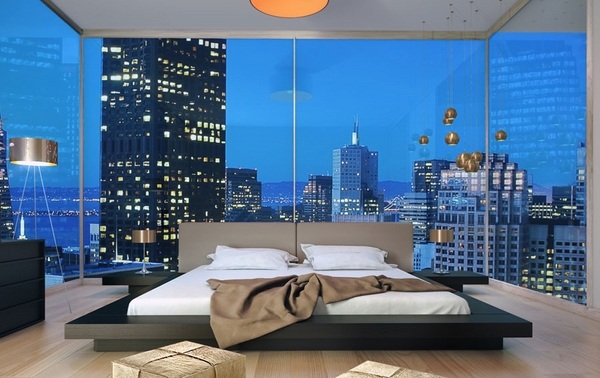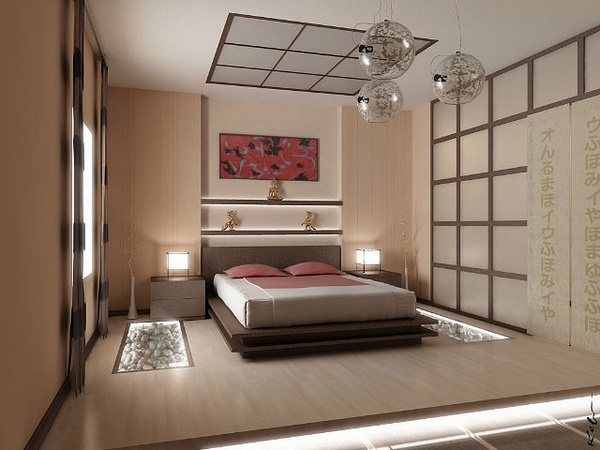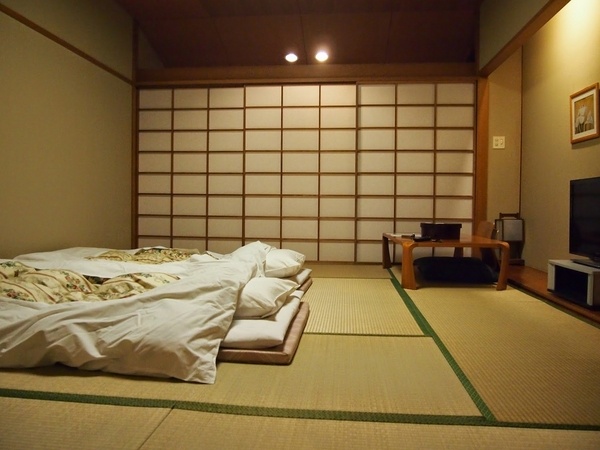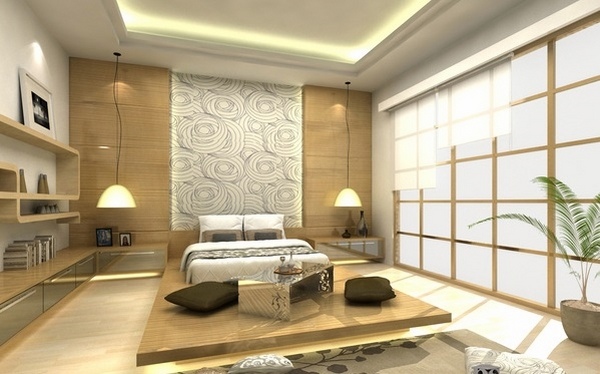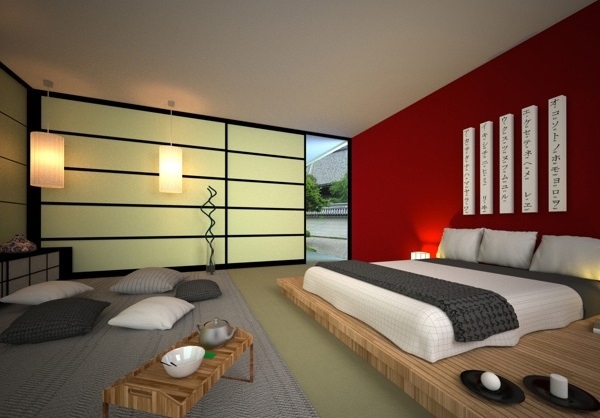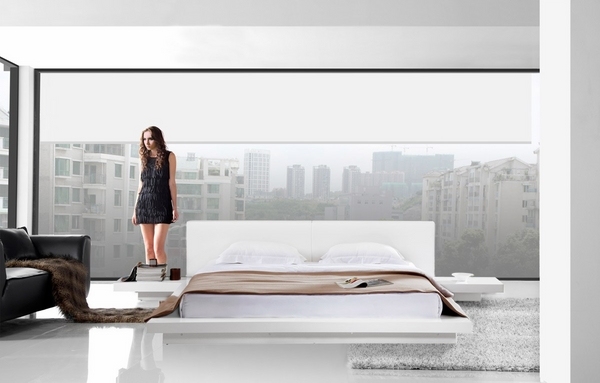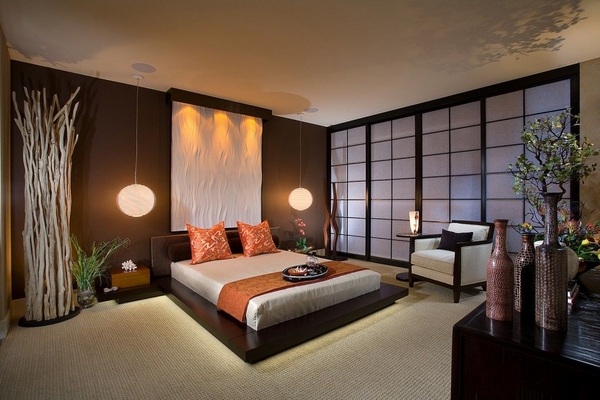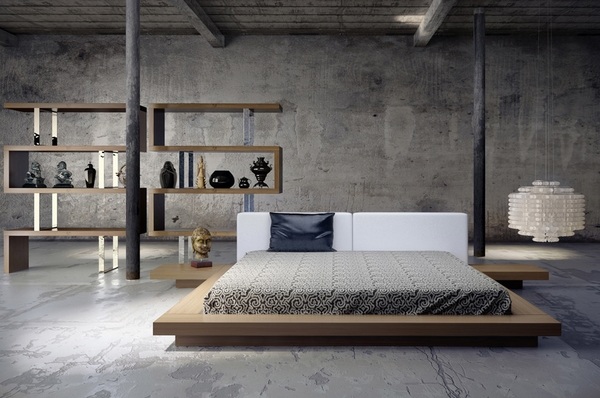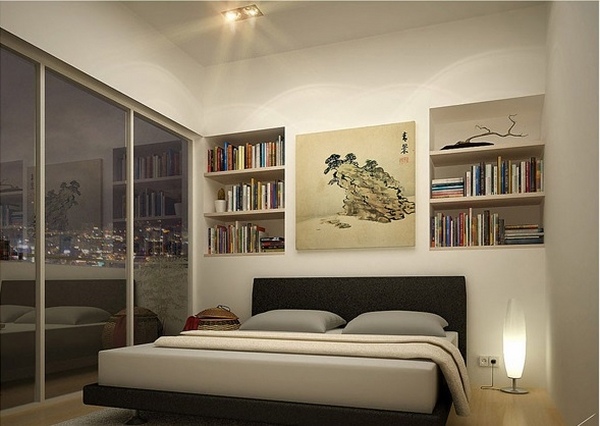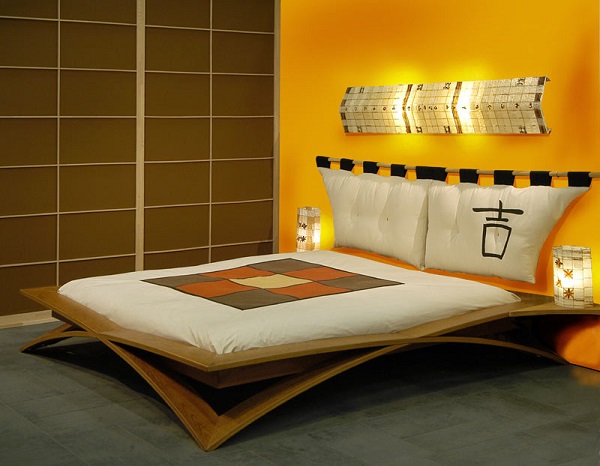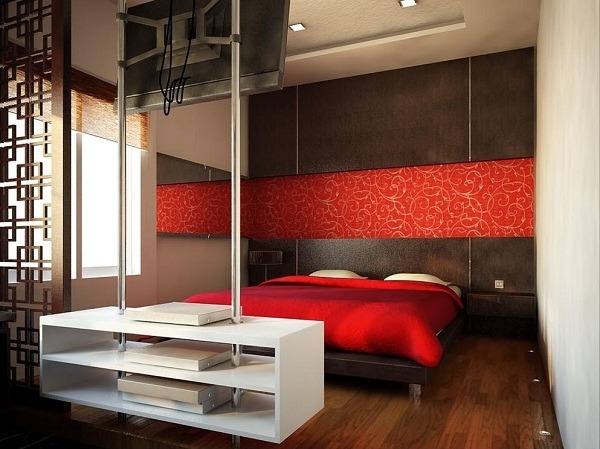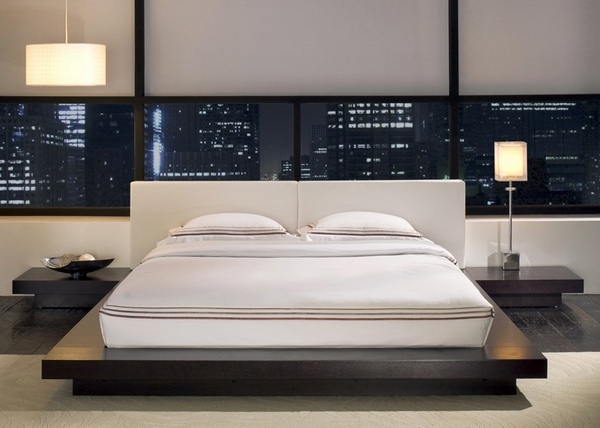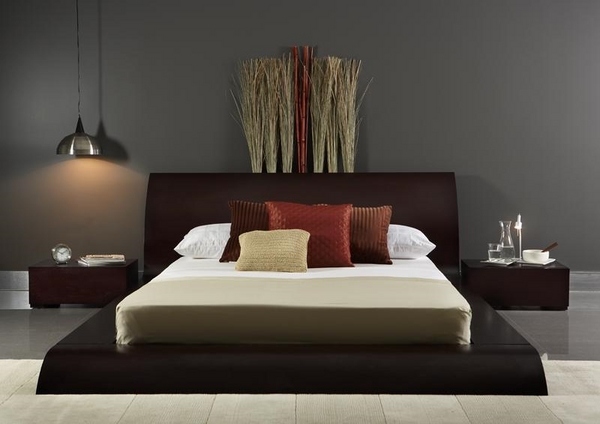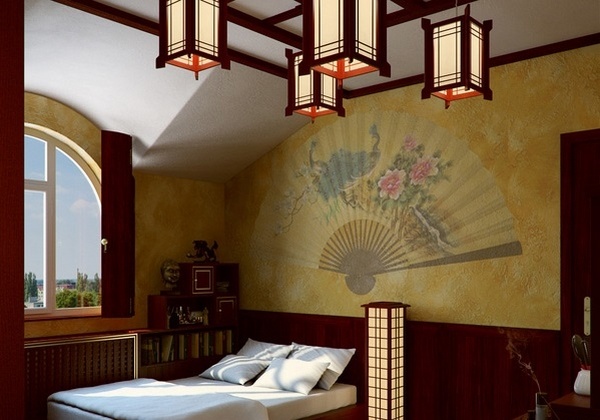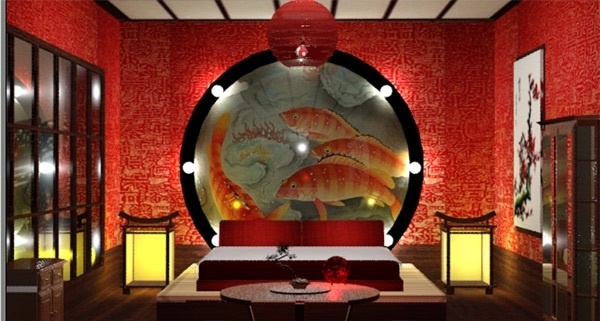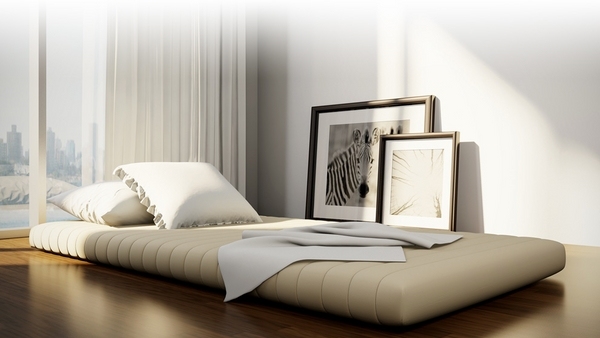People who are used to the traditional European style of interiors might be quite shocked as the Japanese style is the ultimate minimalism. The complete absence of furniture, the simplicity which is often to the point of austerity and the minimum of decoration are far from the idea of individualizing the home which is so typical for European interiors. With the growing popularity of minimalism, however, many architects, designers and interior decorators are implementing the Japanese style in contemporary interiors. It is full of philosophical meaning, it is simple and at the same time harmonious as nature itself. Most often this interior style is used for bedroom designs and we shall look at some fantastic Japanese style bed design ideas in contemporary home interiors.
Japanese style bed design ideas for a bedroom imbued with harmony
You will never see a massive bed in a traditional Japanese bedroom. You will not see a bed frame either. Traditional futon beds are made of entirely natural materials and are placed on the floor. Modern Japanese style bed design ideas have transferred the philosophy of the clean lines and the low height to contemporary interiors and you will see wonderful bed designs which interpret the idea and concept of minimalism. A bedroom in Japanese style is designed as a place where people can enjoy the tranquility and the atmosphere is imbued with harmony without any unnecessary and annoying details.
The low bed is the centerpiece of the bedroom and its distinctive feature. Modern Japanese style bed design ideas feature beds on low platforms or with low legs and straight lines which is an interpretation of the traditional futon bed. The low construction is considered to represent stability although practical minds criticize it with the comment that you must move the bed in order to get rid of the dust on the floor. Japanese style beds are characterized with natural colors and natural materials. No decoration, no ornaments, just purity of the minimalist concept “less is more”.
Japanese style bed design ideas and bedroom interiors
We cannot separate Japanese style bed design ideas from the idea of a Japanese style bedroom interior. Even in modern home designs the interiors follow the basic rules – simple and functional furniture, simple geometry and crisp, straight lines. The traditional colors – white, beige, yellow, brown are combined with bright accents and warm rich colors. Modern interiors take advantage of the lifestyle of 21st century and keeping strictly the authenticity is no longer an obligatory rule. The basic idea is to preserve the atmosphere of peace and comfort. Sometimes traditional elements are uses in an unexpected way to enhance the overall atmosphere. For example, low tables, floor cushions, bonsai trees are used to underline the geometry and strictness of lines and add an artistic touch. Japanese style can be emphasized by using bamboo decor on the walls, stylish lamps, traditional rice paper lanterns, tables for the tea ceremony, origami, ikebana or hieroglyphics.
Japanese style bedroom interiors – how to create a balance between tradition and modern?
When you want to create a Japanese style bedroom interior you have to show understanding of the philosophy of the tradition, lifestyle and values which represent the pursuit to know yourself and to be close to nature. Minimalism is a basic and important rule that is observed in the design of bedrooms and whether modern or reaching out to express traditions, the lack of pretentiousness should be a main guideline.
Colors are essential. They should be natural and muted and you should restrict the urge of using more than three colors. Pastel beige, white, pearl, taupe, sand, cream – these are the typical colors in the interiors. Red and green are used very rarely and when they are present in the interior they are usually very dark or very light, never bright.
Plenty of room and free space is another basic feature in Japanese interiors. This means as little furniture as possible. Like we said the bed is the main piece of furniture. Modern Japanese style bed design ideas have lent the bed frame and headboard from European style only they are very low, often without legs and the mattress is placed on a platform. Headboard is an optional element, but if there is one, it should be very simple with strict and straight lines. When choosing bedding it is better not to use bright and colorful bedding sets. Colors like beige, light green, white, light brown are much more appropriate and suitable for the concept and philosophy of this interior design.
Cabinets, if any, have to mimic the walls, the fronts should be smooth and without ornaments. Built-in cabinets or closed shelves which are painted to match the walls create the feeling of empty space.
Using natural materials are another pillar in the design of Japanese interiors. The idea of unity with nature has always been of greatest significance. Traditional Japanese style textures and materials are used in contemporary bedroom designs to express the respect for Nature – bamboo, pine, wicker vine, maple, stone, lightweight partitions or screens made rice paper, painted silk, etc.
As much as the Japanese style bed is the centerpiece of the bedroom design, modern interiors use some accessories to complete the room. The number of accessories should be limited – a vase, an exquisite piece of porcelain, a Buddha statue, a bonsai tree or a picture. Do not hang more than one picture as according to Japanese beliefs, if you hung several pictures on the wall it is equivalent to listening to several songs at the same.
Decorative elements and accessories have to be chosen with great attention as they need to blend harmoniously with the rest of the interior. They should not divert the attention from the bed, which is the main focus and the overall design must be focused at simplicity and functionality. Although difficult, it is not impossible to recreate the authentic atmosphere of a Japanese bedroom when you carefully use colors, materials and follow the basic design concepts and rules.

